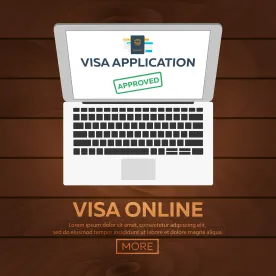The H-1B season is in full swing. Although U.S. Citizenship and Immigration Services (“USCIS”) has proposed changes to the H-1B, the process remains largely the same for this year. As in past years, the filing window for H-1B both opens and closes on April 1. Employers looking to hire or retain talented foreign national professionals should begin the application process as soon as possible.
Which employees qualify for an H-1B? The H-1B is available to fill a “specialty occupation,” defined by regulation as a position that requires “(a) theoretical and practical application of a body of highly specialized knowledge, and (b) attainment of a bachelor’s or higher degree in the specific specialty (or its equivalent) as a minimum for entry into the occupation in the United States.”
The H-1B is the main work visa for highly skilled professional foreign workers, and the H-1B slots are in short supply. A total of 85,000 H-1B visas are available each year, with certain preference given to foreign nationals with Masters Degrees or higher from US colleges. Employers may file H-1B applications six months before the start of the new fiscal year, which means the filing window for H-1B applications opens each year on April 1. Each year the demand for H-1B visas greatly outweighs the supply, with approximately 200,000 applications filed on April 1. As more applications are filed than visas are available, USCIS conducts a random lottery to select the applications for consideration.
Why begin the application process now? A proper and well-considered H-1B application takes time to prepare. First, employers must file a labor condition application (“LCA”) with the U.S. Department of Labor (“DOL”). The LCA requires the employer to attest 1) to the wages to be paid to the foreign worker; 2) that the employer is providing working conditions that will not adversely affect the working conditions of workers similarly employed; 3) that there is not a strike or lockout in the occupational classification at the place of employment; and 4) that the employer has provided notice of the filing of the LCA. Although the DOL typically processes LCA applications within seven days, delays can occur, particularly at this time of year when so many employers are preparing to file H-1B applications in the lottery.
After the LCA is certified by the DOL, the employer must file a petition with USCIS seeking approval to employ the foreign worker in H-1B status. An employer cannot file the H-1B petition without first obtaining DOL certification of the LCA.
The H-1B application process has become more challenging for employers over the last two years. Under the Administration’s Buy American Hire American Executive Order, USCIS is more likely to question the merits of H-1B filings, particularly focusing on whether a position truly qualifies as a specialty occupation. This increased level of scrutiny means that employers should take care when preparing and documenting an H-1B application. Care is needed when analyzing if a position reasonably is a specialty occupation, and then determining the best information and documentation available that an employer may provide to persuade USCIS.
The H-1B lottery system, along with a more difficult adjudications environment, present continuing obstacles for employers looking to hire key talent. Although time is running short for this year’s lottery, interested employers have not yet reached closing time.




 />i
/>i

